As Seen in Captive International’s Cayman Focus 2024
Total cost of risk (TCOR) is a buzzword in the insurance space, but it is a metric that carries significant operational weight, and can mean different things depending upon the organisation. There is no tried and true approach to TCOR, but we have gleaned valuable insights after consulting on the topic across a range of companies and risk profiles.
Leveraging those insights, we are sharing here a foundation for framing TCOR at your organisation, keeping in mind common dos and don’ts we have come across.
What is TCoR?
It’s important to start at the beginning. While there are various definitions out there, the International Risk Management Institute (IRMI) states that TCOR is the sum of all aspects of an organisation’s operations that relate to risk, both the cost of managing risks and the cost of losses incurred. These costs typically fall into the following categories:
- Retained (uninsured) losses and related loss adjustment expenses
- Risk control costs
- Transfer costs
- Administrative costs
More sophisticated risk management programmes may have internal risk control costs, whereas for other organisations these may be embedded into what is paid to a carrier with the goal of controlling loss.
Commercial insurance premiums are a prime example of a TCOR driver, representing what you are paying to transfer certain costs to the commercial or reinsurance market. Even for organisations with a captive, which is known to save organisations money in the long term, a risk transfer premium is still happening from the parent company to the captive.
Further, whether or not a captive programme is in place, most companies, especially those on the larger side, still retain a portion of their risk on their corporate balance sheet (eg, cyber deductible).
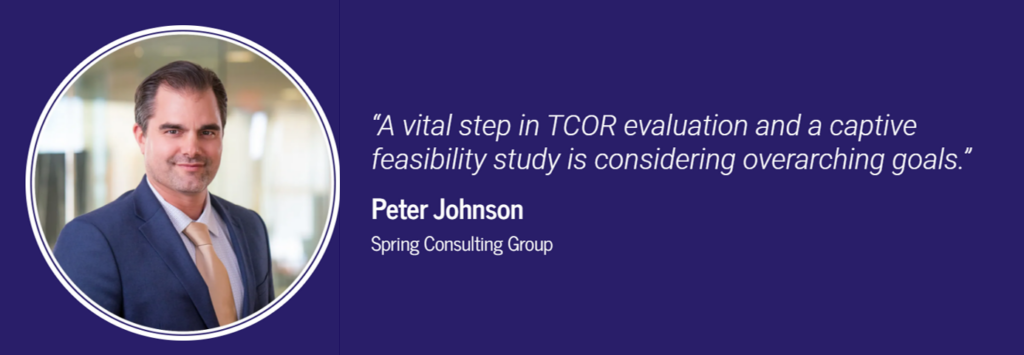
Building your TCoR
What constitutes TCOR varies across industries and company but regardless it can be backed by sophisticated risk management models as well as simpler calculations.
From a broad perspective, commonly overlooked considerations when it comes to tracking TCOR include:
- Beyond the frictional carrier or captive out-the-door premiums, other items budgeted for on the insured side such as safety programmes, loss control, and bonus programmes should be evaluated for inclusion or exclusion. If they are tracked within a captive premium (as is typically the case with loss control), such items are captured already so a company needs to be cognisant of not double-counting.
- Investment and underwriting income. Generally captives are priced to earn underwriting income and also earn investment income on the held assets to pay for unpaid claims. This income should be accounted for, which results in a lower TCOR.
- Softer costs such as risk management or safety personnel should be assessed for inclusion. Overall, consideration beyond obvious face-value expenses and including ancillary factors across the company provide a more robust calculation. Actuarial estimates of claims should be utilised for validation. Avoid relying solely on loss runs as this creates volatility because the third-party administrator (TPA) is typically only booking case reserves in the incurred claim estimates without factoring in the actuarial incurred but not reported development.
- Evaluation dates and look-back periods provide for quality tracking and the generation of trends, and should be assessed at various points in time. This is important when trying to compare the costs of various programmes related to budget and cash flow.
Perhaps most important is the need for year-over-year consistency regarding what is included in TCOR and what is excluded.
Who uses TCOR?
TCOR is meaningful to different stakeholders depending on the company, but these key audiences have important use cases for TCOR as follows:
- Risk managers leverage TCOR to show how they are approaching risk management and demonstrate how the company should retain risk, either through a captive premium or another method, as well as recommend what portion of risk should be transferred.
- Finance/accounting departments use TCOR to stress test and illustrate how much the organisation can afford and then plan for budgetary items that should reduce stated risk.
- Property and casualty (P&C) brokers care about TCOR because it enables them to benchmark and perform retention analyses in order to optimise programmes and mitigate volatility for their clients. TCOR allows them to make an apples-to-apples comparison year over year.
Trends and best practices
TCOR should not be touted simply because it sounds good. It needs to be grounded in analytics, formal reviews, and comprehensive reporting that outlines how TCOR is arrived at and what it means for your organisation. For large companies, TCOR may be factored into bidding, procurement, and contract processes. For smaller companies, there may not be enough critical mass to validate a self-funded approach, which means you’re more susceptible to market conditions and capacity.
From an organisational standpoint, TCOR plays a significant role in (i) accountability and compliance; (ii) making sure all assets, certificates of insurance, and contracts are listed; (iii) employees are accounted for; and (iv) there are no gaps in coverage that could change TCOR unexpectedly at the end of the year.
A vital step in TCOR evaluation and a captive feasibility study is considering overarching goals. If your company is looking to stay at cost, then moving to a captive may not always be the best play and you may be better off in the commercial market. This is why, as part of a TCOR analysis that is embedded within a feasibility study process as a means to reduce risk, alternative retentions in the market should be evaluated and the different scenarios to determine whether or not a captive makes the most sense outlined.

Other pieces of TCOR wisdom we have gathered over the years include:
- Fluctuations will happen from year to year, but some of the more volatile components are captive income and retained claims.
- A common misconception is that by increasing retention, lowering limits, or both combined, a reduction in TCOR will automatically occur. This may be true but is not necessarily so, as these practices could also expose the company to more risk than anticipated and that loss potential may not be appropriately projected.
- Consider this: with cyber and umbrella coverage becoming expensive for companies, let’s say you drop cyber entirely and lower limits to reduce TCOR by 5 percent. But then there’s a $3 million loss within that layer that would have been covered by policies you no longer have, so even though your budgeted TCOR went down by 5 percent, your realised TCOR increased by 10 percent due to the new loss.
- Analysis should consider different scenarios: what could happen, versus a straight-line evaluation.
- Ensure that at the time of increasing or decreasing a limit or removing a policy altogether, all parties agree to this move and it is documented to avoid questions after the fact.
- Benchmarking TCOR should be taken with a grain of salt, as practices are varied and factors such as captive versus no captive, geographic risk class differences, treatment of risk management admin costs, inflation and payroll may be working behind the scenes and can prohibit a direct comparison between two different organisations.
Conclusions
TCOR is complicated, but it is important to take a wide view of all the pieces of the puzzle, and then find the correlations and mitigation strategies available through the buying process. Captives need to understand how to budget for TCOR, how to build it at your organisation, and then how to interpret it year over year.
Strong TCOR practices can lead to improved risk management, smoother claims processes, and overall lower costs, especially for growing companies. A thoughtful TCOR approach serves to unify all your insurance stakeholders, from risk managers to CFOs, in understanding insurance spend and ultimately the total cost of risk.
Captive International has released the winners for the 2023 US Awards. Spring is proud to announce that our Managing Partner, Karin Landry won the Best Feasibility Study Individual. We were also highly commended for Best Actuarial Firm, Top Feasibility Study Firm, and Top Captive Consulting Firm. Our team was also highly commended for the following: Best Individual Captive Consultant (Karin Landry & Prabal Lakhanpal), Best Individual Feasibility Study (Prabal Lakhanpal) and Best Actuary (Peter Johnson & Nick Frongillo).


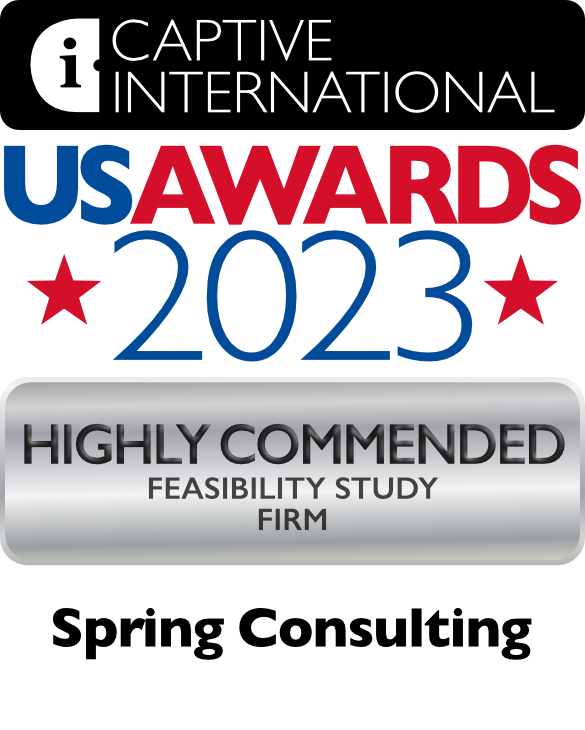
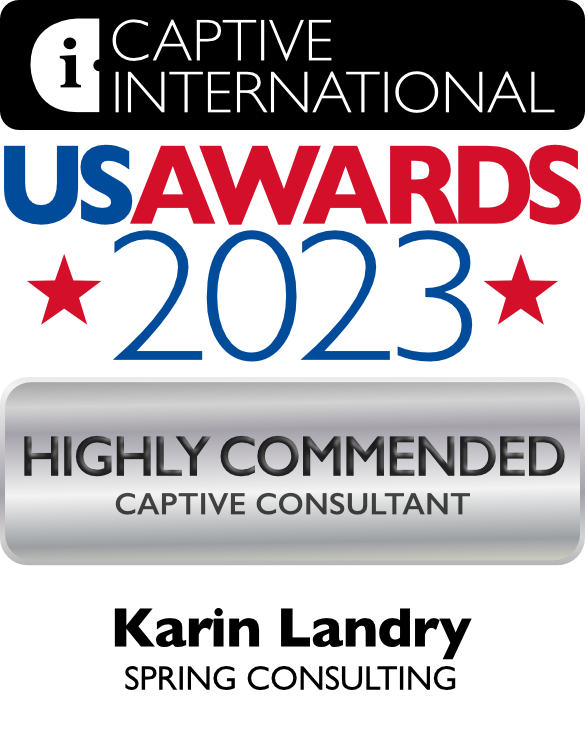
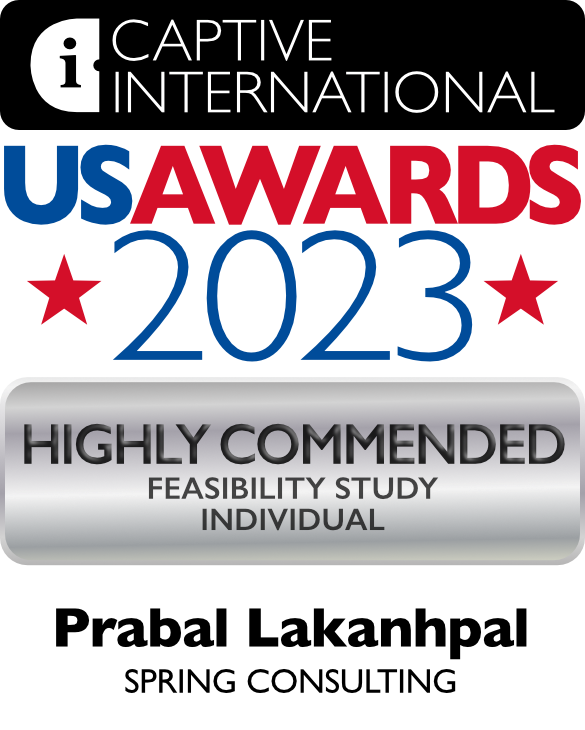
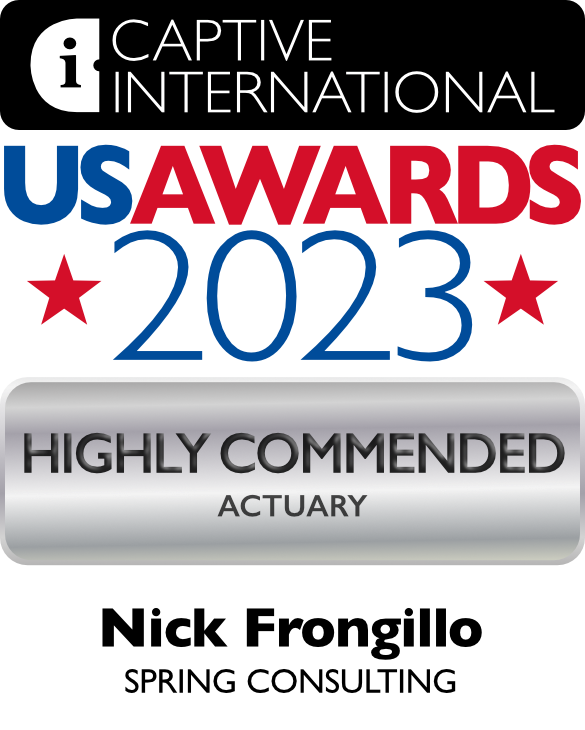
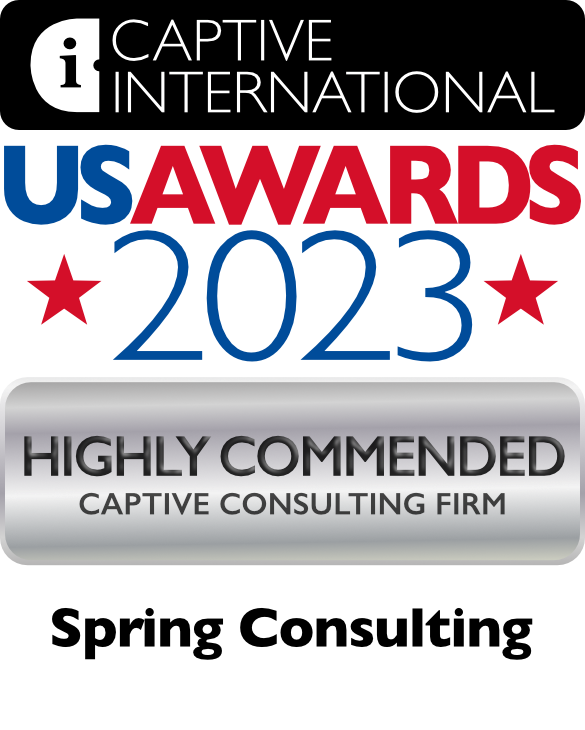
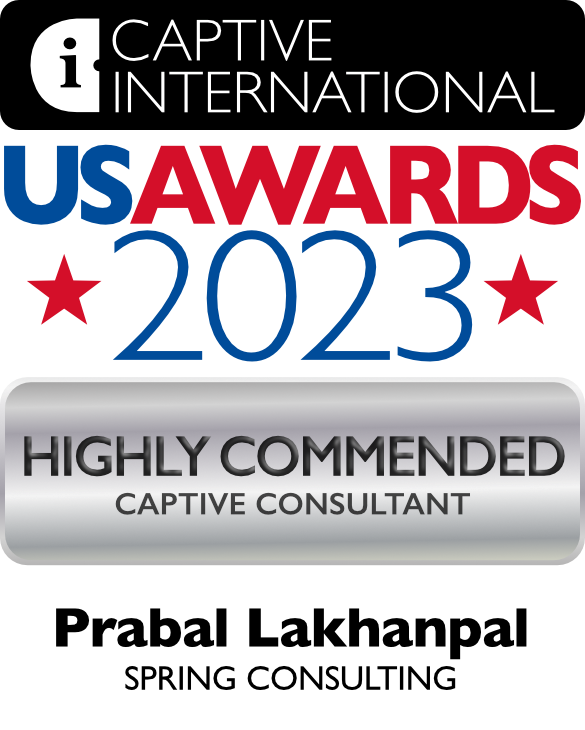
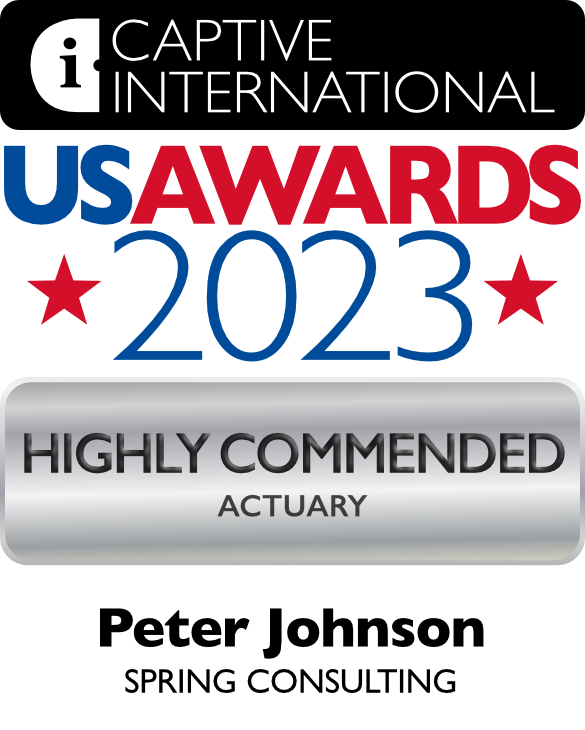
Spring has been recognized as one of the Top Employee Benefits Consulting firms in Massachusetts by Mployer Advisors, who focus on connecting employers with top-rated insurance advisors. We’d also like to congratulate our colleagues at Boston Benefit Partners, An Alera Group Company, for making the list as well! You can find the full update here.
Our Senior Vice President, Prabal Lakhanpal was featured in a Global Captive Podcast episode, during which they discussed Spring’s client, The Haskell Company. Haskell is a privately-owned engineering, construction and architectural firm that was able to reduce insurance costs, optimize coverage, and introduce new lines of risk by switching to a captive. Check out the full episode here.
I had the pleasure of leading a panel last month at the 2023 VCIA Annual Conference entitled, “Tips for Communicating the Value of Your Captive,” and it was a lively discussion with great takeaways I wanted to share.
Background
Today’s economy is tough, and the insurance markets have hardened. As a result, organizations are in reactive mode, looking for combative strategies to mitigate bottom-line issues. A captive insurance program has long been a risk management tool that allows organizations to weather proverbial storms like these. For those organizations with a captive, risk managers might have to defend against a piggyback mentality from leadership or other stakeholders, because the current environment creates temptation to treat a captive like an ATM regarding surplus. In addition, goals and purpose surrounding a captive are likely to change over the years. As such, it’s important to be able to illustrate captive performance in tangible ways that will resonate with audiences outside the core captive team.
Captives as Problem Solvers
There is a time and place to leverage capital surplus from a captive, but a great strategy is to use that by pouring additional coverage and innovation back into your insurance programs. To do so, we recommend securing reliable relationships with your broker and actuary to understand your captive’s risk appetite, what problems could be solved via a captive, industry statistics and trends, and whether the risk is worth the reward for a particular initiative. TPA or data analytics partners are also critical to assess exposures and determine potential loss prevention measures. Lastly, your captive manager should serve as a valued second opinion and will help evaluate the ramifications of exposing equity in the captive to new potential losses.
The ultimate goal here should be to reduce the total cost of risk (TCOR).
To bring concepts to life, one of Spring’s clients used captive surplus to hire a return-to-work coordinator, which in turn improved overall disability and productivity goals. Another client worked to obtain sexual abuse & molestation coverage that was difficult to procure. A private equity firm was able to retain ransomware coverage after a significant claim hit and utilized the captive to buy down the retention for individual entities, mitigating premium increases.
Metrics to Consider
Every captive has different experience, objectives, and risks represented, so it is hard to pinpoint benchmarks that will hold true across every program. That said, there are some factors and calculations that should be top-of-mind regarding captive performance.
Qualitative
While numbers and hard ROI are often the priority, “soft” indicators, such as those listed below, should not be discounted.
- Goals achieved vs. intended purpose
- Ability of the captive to cover risks the commercial market will not insure
- Flexibility
- Risk distribution
- Captive expansion
Quantitative
For the numbers crowd like our actuaries, below is a non-exhaustive list of metrics to consider when working to gauge your captive’s success.
- Loss & expense ratio (i.e., combined ratio)
- Captive premium increase vs. commercial market increase
- Volatility of earnings by captive line of coverage, and in aggregate
- Leverage ratio (net written premium to surplus should be around 3:1 to 5:1 or lower)
- TCOR overall
- TCOR vs. market increase
Given the difficult markets we are facing as an industry, we are stressing to our risk manager clients the criticality of captive optimization, but also the need to truly have a pulse on your captive’s performance and be able to illustrate it to a wider range of stakeholders who may be under financial pressure. If you could use assistance in developing customized key performance indicators (KPIs) for your captive program, or in diving into these qualitative and quantitative measures at an organization level, Spring’s consultants and actuaries are ready to help.
In Captive Intelligence’s latest Global Captive Podcast episode (#91), our Vice President, TJ Scherer shares details about his new role at Spring and reviews his experience in the captive and P&C arena.
At the end of 2022, Vermont became the largest captive domicile globally with 639 active captive insurance companies. So, it was only fitting that the Vermont Captive Insurance Association (VCIA) had one of the biggest turnouts this year at their annual conference, which brings together insurers and reinsurers, captive owners and risk managers, regulators and other industry professionals to network and discuss current trends in the industry. This year the Spring team and I had the pleasure of once again exhibiting and speaking at the conference in beautiful Burlington, Vermont. Below are some of the topics that took the spotlight.
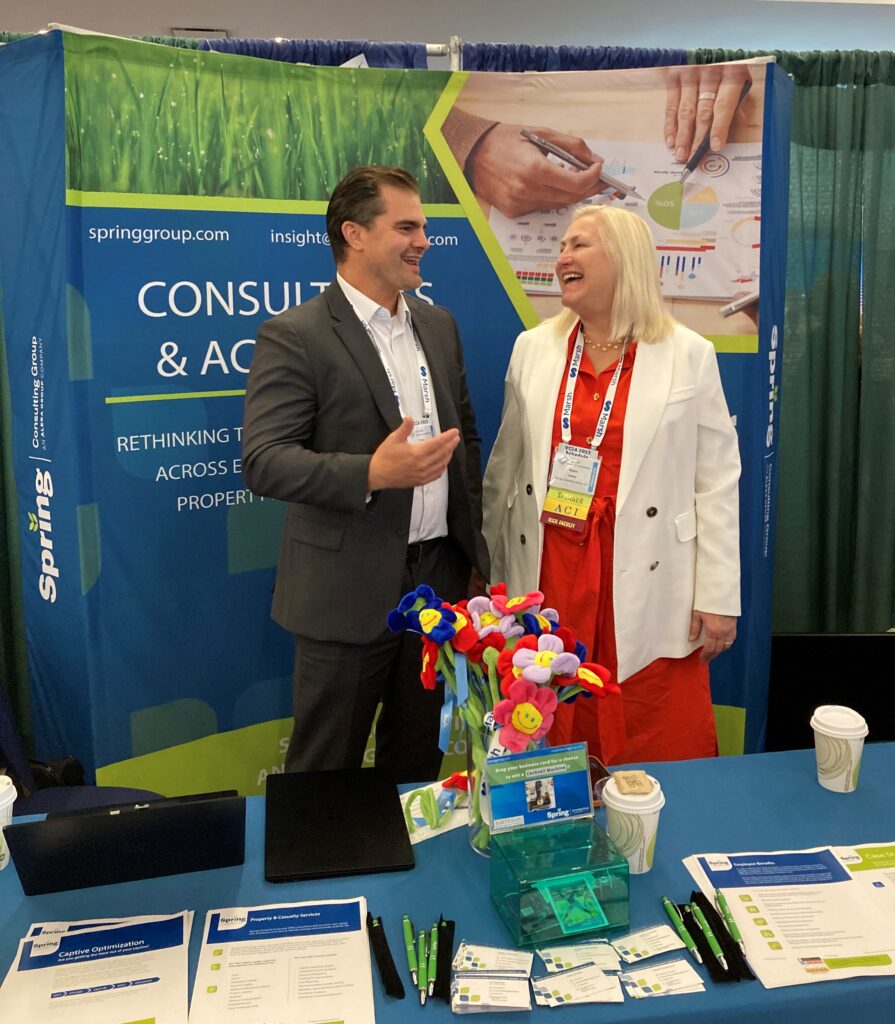
1) Managing economic fluctuation
From groceries to rent it seems like nobody can avoid inflation, which is no different in the captive insurance and risk management sectors. Due to increased claims, stricter underwriting and high healthcare costs, many employers are looking into alternative risk financing options to stretch the dollar. Below are some of the sessions from VCIA I found most pertinent when addressing the economic landscape.
– In a session titled “The Economic Landscape & Your Captive’s Investment Portfolio,” speakers reviewed how interest rates, inflation, and other economic indicators have changed the captive industry post-COVID.
– The session “Impact of Inflation on Your Captive” reviewed how rising inflation and supply chain interruptions are impacting the captive industry, and what we can expect moving forward.
2) Pitching captive insurance
Although captive insurance can increase savings, reduce risk, and lead to investment opportunities, C-suite and other stakeholders may be hesitant due to resources and risk. No matter how efficiently a captive program is designed, it can’t be maximized without buy-in from all parties. Here are some presentations I found most insightful on boosting communication.
– Two captive board members and a consultant presented on “Innovative Ways to Fire-Up Your Board,” where they provided tools and tactics to boost some life and creativity into captive board meetings.
– My colleague, Karin Landry was accompanied by a captive owner and a tax auditor to discuss the need for strong communication amongst risk managers, captive owners, board(s) and other parties to ensure the captive remains successful. The session included a list of recommended Key Performance Indicators (KPIs) for risk managers to have as a tool in their toolbox when illustrating captive performance to other stakeholders.
3) A look forward
In just the past half decade we’ve seen drastic developments globally including devastating climate events, a widespread pandemic and war spreading overseas. These events remind us that there are always factors beyond our control that can complicate established best practices, but VCIA speakers gave their views on what’s to come.
a) Prepping the next gen
As an annual attendee at VCIA it was great to see the sheer number of new faces and developing talent at the conference. This year VCIA made sure to include an array of introductory level sessions designed to solidify foundational captive knowledge for those entering the industry. Some of the sessions I found most intriguing include:
– A two-part session titled “(The) Newcomer’s Guide to the Captive Industry” brought emerging leaders together to express their unique experiences in the captive space and tips for others entering into captives for the first time.
– In an interactive discussion group on “Building Talent in the Captive Industry,” industry leaders discussed major workplace challenges and tactics for building a strong talent base that will one day drive the future of the industry.
b) The future of captive insurance
Although often thought of as a traditional sector, we continue to see innovative approaches to risk financing across employee benefits and P&C. Here are forward-looking presentations I found interesting.
– A captive owner and business professional explored recent innovations and solutions in the ‘captive insurance laboratory’ during their session, “Where Will Captives Go Next? The Latest Uses for Captives.”
– One group of speakers took an interesting approach and spoke on “Leveraging New Tech and Data Visualization Tools for Captives.” They reviewed how various stakeholders can utilize tech to bolster actuarial analyses and efficient decision-making.
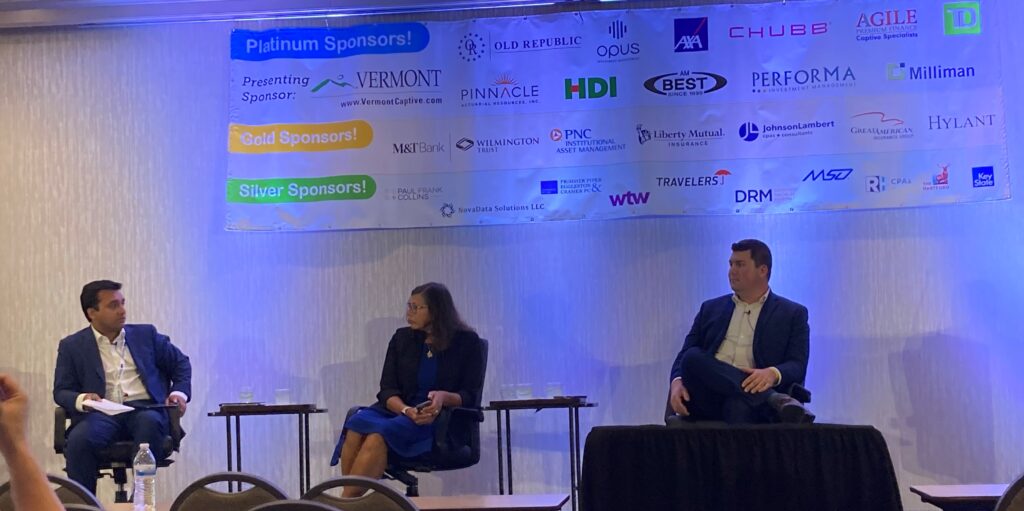
As a regular VCIA attendee, I found this conference to be the most fun to date. Aside from all the happy hours, free giveaways and tasty meals, I had a great time reconnecting with industry leaders and deepening my knowledge of captives. On behalf of Spring, my colleagues and I enjoyed the opportunity to exhibit and look forward to next year’s conference. Lastly, I had the pleasure of being accompanied by a captive owner and stop loss carrier to present on risk management strategies that are impacting employer-sponsored health plans and the rising costs associated.
Spring is excited to welcome T.J. Scherer to our team as of July 31st as Vice President. His focus is on supporting our existing clients and growing the business on the P&C and captive insurance space. He will work closely with our captive consultants and actuaries to bring additional insight and financial mindset to our client conversations around strategic risk management.
T.J. brings over 10 years of experience managing complex client relationships and engagement for risk management programs. T.J. has extensive experience in financial reporting including financial proformas and long-term planning strategy, audit coordination and preparedness, and compliance and regulatory matters.
T.J. is a Certified Public Accountant (CPA) in California, holds an Associate in Captive Insurance (ACI), and is a RIMS-Certified Risk Management Professional. He received a master’s degree in accounting and financial management from the Keller School of Management and a bachelor’s degree in business administration from the University of Iowa.
We are delighted to have TJ join the ever-growing network of bright minds within Spring and Alera Group.
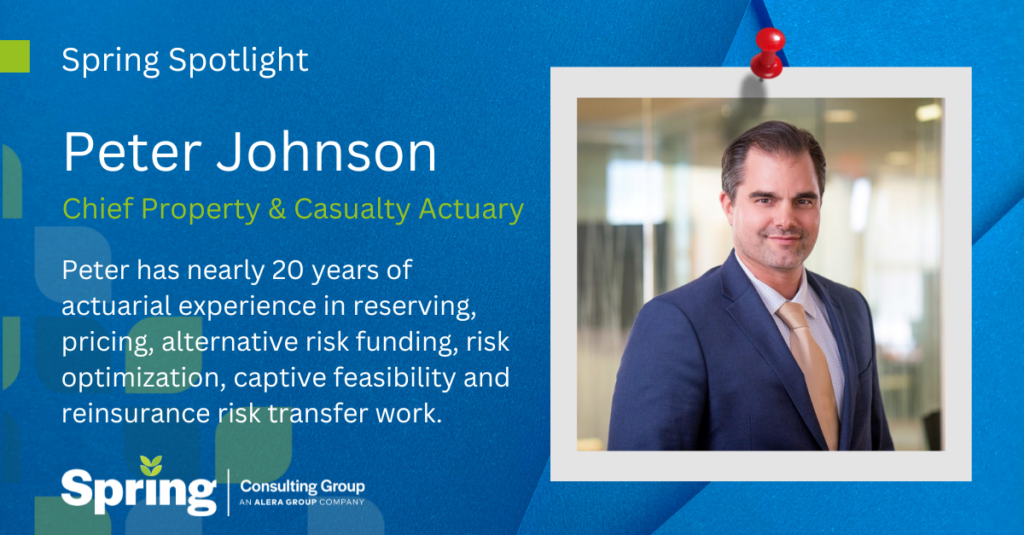
Title:
Chief Property & Casualty Actuary
Joined Spring:
I joined Spring in 2017.
Hometown:
I’m from rural Wisconsin, about 30 miles south of Green Bay.
At-Work Responsibilities:
As Chief P&C Actuary, I lead our property & casualty team at Spring. This consists of performing actuarial feasibility studies, captive consulting for new and existing captive insurance companies and risk retention groups, reviewing captive applications and actuarial reserving studies for regulators, working with Alera brokers on collateral analysis and reserve studies and other actuarial analyses, developing new business and maintaining existing client relationships.
Outside of Work Hobbies/Interests:
I enjoy being outdoors, outside of the office I like fishing, boating and traveling.
Fun Fact:
In my early 20s, I took 2 years of a method acting class.
Describe Spring in 3 Words:
Collaborative intelligent team.
Favorite Movie:
Avatar
Do You Have Any Children?:
Yes, I have 3 kids ages 24, 20, and 16.
If You Were a Superhero, Who Would You Be?
Thor